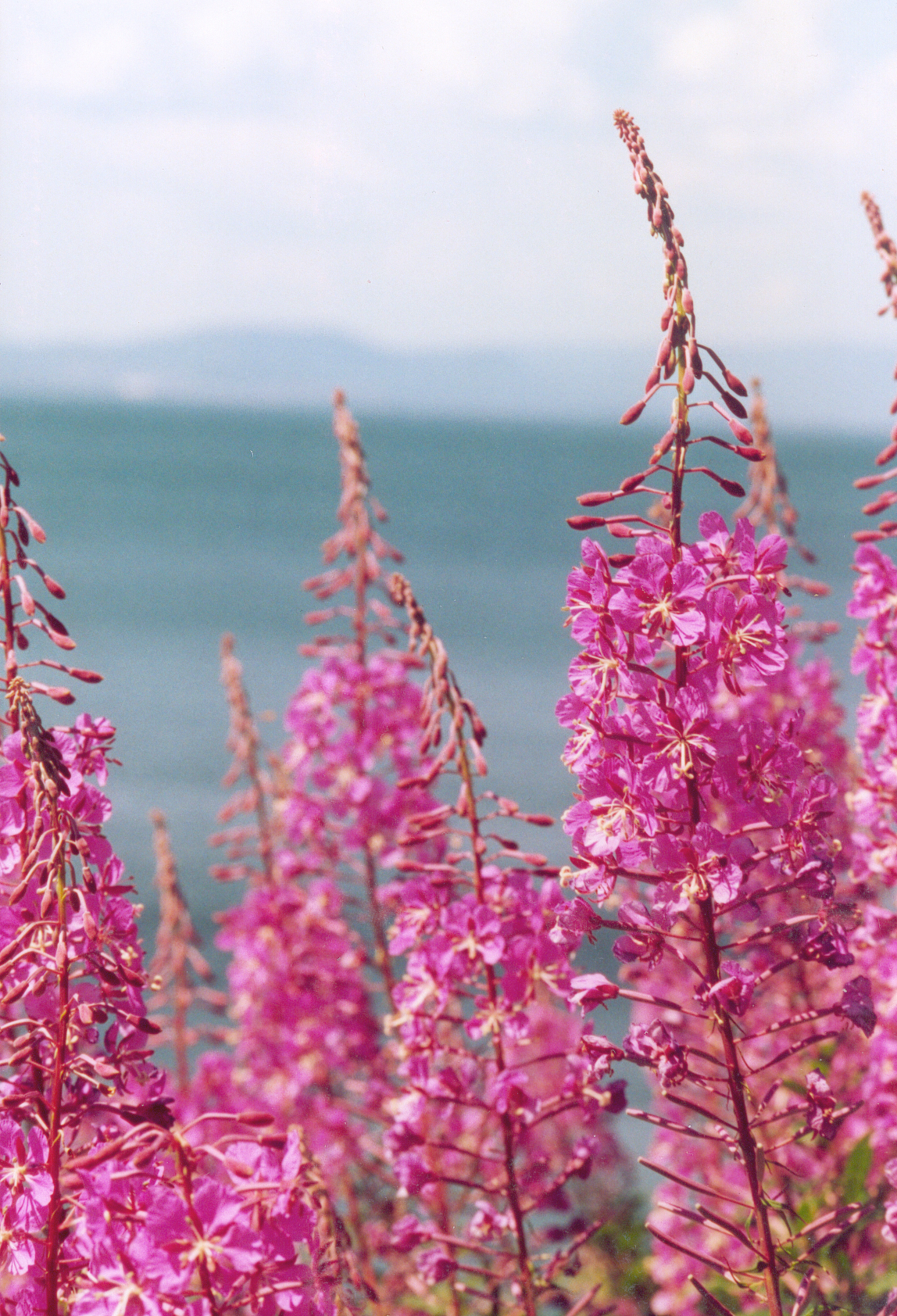- Fireweed
Taxobox
name = Fireweed

image_width = 220px
regnum =Plant ae
divisio = Magnoliophyta
classis =Magnoliopsida
ordo =Myrtales
familia =Onagraceae
genus = "Epilobium "
species = "E. angustifolium"
binomial = "Epilobium angustifolium"
binomial_authority = L.Fireweed or (mainly in Britain) Rosebay Willowherb ("Epilobium angustifolium") is a perennial
herb aceousplant in the willowherb familyOnagraceae . It is native throughout the temperateNorthern Hemisphere .Synonyms
Some botanists distinguish the species from other
willowherb s into either of the genera "Chamaenerion" or "Chamerion", on the basis of its spiral (rather than opposite or whorled)leaf arrangement, but this feature (which occurs also to a greater or lesser extent in some other willowherbs) is not of marked taxonomic significance. Nevertheless, the following synonyms may be found: "Chamerion angustifolium" (L.) Holub and "Chamaenerion angustifolium" (L.) Scop.Description
This herb is often abundant in wet
calcareous to slightly acidic soils in open fields, pastures, and particularly burned-over lands; the name Fireweed derives from the species' abundance as a coloniser on burnt sites after forest fires. Its tendency to quickly colonize open areas with little competition, such as sites of forest fires andforest clearing s, makes it a clear example of apioneer species . Plants grow and flower as long as there is open space and plenty of light, as trees and brush grow larger the plants die out, but the seeds remain viable in the soil seed bank for many years, when a new fire or other disturbance occurs that opens up the ground to light again the seeds germinate. Some areas with heavy seed counts in the soil, after burning, can be covered with pure dense stands of this species and when in flower the landscape is turned into fields of color.The reddish stems of this herbaceous perennial are usually simple, erect, smooth, 0.5-2.5 m (1½-8 feet) high with scattered alternate leaves. The leaves are entire, lanceolate, and pinnately veined. A relative species, Dwarf Fireweed ("Epilobium latifolium"), grows to 0.3-0.6 m tall.
The radially symmetrical flowers have four magenta to pink petals, 2 to 3 cm in diameter. The styles have four stigmas, which occur in symmetrical terminal racemes.
The reddish-brown linear
seed capsule splits from the apex. It bears many minute brown seeds, about 300 to 400 per capsule and 80,000 per plant. The seeds have silky hairs to aid wind dispersal and are very easily spread by the wind, often becoming a weed and a dominant species on disturbed ground. Once established, the plants also spread extensively by underground roots, an individual plant eventually forming a large patch.The leaves of fireweed are unique in that the leaf veins are circular and do not terminate on the edges of the leaf, but form circular loops and join together inside the outer leaf margins. This feature makes the plants very easy to identify in all stages of growth. When fireweed first emerges in early spring, it can closely resemble several highly toxic members of the lily family, however, it is easily identified by its unique leaf vein structure.
Uses
The young shoots were often collected in the spring by Native American people and mixed with other greens. They are best when young and tender; as the plant matures the leaves become tough and somewhat bitter. The southeast Native Americans use the stems in the stage. They are peeled and eaten raw. When properly prepared soon after picking they are a good source of
vitamin C and pro-vitamin A. The Dena'ina add fireweed to their dogs' food. Fireweed is also a medicine of the Upper Inlet Dena'ina, who treatpus -filled boils or cuts by placing a piece of the raw stem on the afflicted area. This is said to draw the pus out of the cut or boil and prevents a cut with pus in it from healing over too quickly.The root can be roasted after scraping off the outside, but often tastes bitter. To mitigate this, collect the root before the plant flowers and remove the brown thread in the middle.
In
Alaska , candies,syrup s, jellies, and evenice cream are made from fireweed.Monofloral honey made primarily from fireweed nectar has a distinctive, spiced flavor.In habitat restoration
Because fireweed can colonize disturbed sites, even following an old oil spill, it is often used to reestablish vegetation. It grows in (and is native to) a variety of temperate to arctic ecosystems. Although it is also grown as an
ornamental plant , some may find it too aggressive in that context. [cite web | url=http://www.fs.fed.us/database/feis/plants/forb/chaang/all.html | title=Species: Chamerion angustifolium | work=Fire Effects Information System]Gallery
Depictions in human culture
Fireweed is the
floral emblem ofYukon .References
* [http://www.csdl.tamu.edu/FLORA/bonapfams/bonxxona.htm
BONAP gives Epilobium angustifolium L.]
* [http://www.itis.usda.gov:8080/servlet/SingleRpt/SingleRpt?search_topic=TSN&search_value=566019ITIS gives Chamerion angustifolium ssp. angustifolium (L.) Holub] Edible and Medicinal Plants of the West, Gregory L. Tilford, ISBN 0-87842-359-1
Wikimedia Foundation. 2010.
